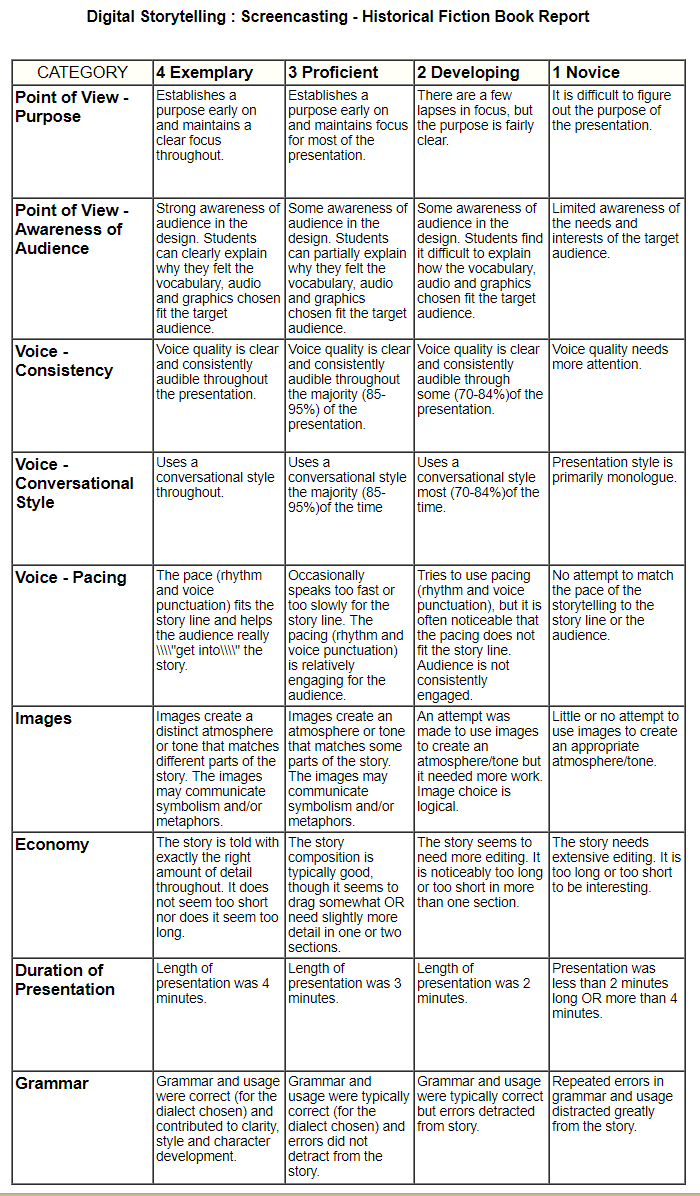Foundations of Educational Technology - Evaluating Digital Resources
I am publishing the evaluation digital resources assignment as one of the artifact for the Foundations of Educational Technology course (Summer 2017). This artifact includes the evaluation of three digital resources on a given digital evaluation rubric. The three evaluated digital resources were: BrainPOP, Imagine Learning and Newsela. I chose these digital resources since I was familiar with their platforms and the service they provide. I should tell you that the use of a rubric to evaluate a digital resource was a new concept to me. In moments of exploring new digital resources, I used to pay attention to other colleagues and friends recommendations together with my personal experience. This assignment has helped me learn the importance of using rubrics to assess digital resources that enhance student’s education.
One of the reasons I find the evaluation of digital rubrics important is because they helped me to define the criteria of choosing or rejecting an educative web resource in a more systematic way. Through the digital evaluation rubrics, I can assess if the digital resources enhance learning experiences that involve the development of the 4C's learning skills of the 21st century. For instance, in moments of selecting a digital educational resource I will be looking for technology features that encourage the achievement of the stated learning objectives, track students ongoing work, promote cultural diversity thinking, and support collaborative learning interaction. Therefore, the evaluation digital rubrics are important because they are educational tools that help me in selecting the right web resources that maximize my students learning.
Another reason is that the evaluation digital rubric helped me compare and contrast the efficiency of the digital resources for delivering my instructional goals. Digital resources are similar and different in many ways. They encourage learning through digital instruction. Specifically, they tend to align the state standards, differentiate instruction and provide easy and logical features to be maneuvered. Their information is also accurate and current. On the other hand, they vary on the way they focus on certain digital features to promote learning. For instance, through this assignment I can say how Newsela supports cultural diversity awareness education through providing authentic community perspectives from all around the world. BrainPOP focuses on the academic concept of learning by animation. And Imagine Learning captures student’s interest by keeping them at their best to move from one stage to another.
In short, the evaluation digital resources assignment through digital rubrics helped me measure and compare how reliable digital resources are for meeting the needs of my students. In sum, I would say that this assignment of evaluating digital resources through evaluation digital rubrics has helped me grow in my knowledge of analyzing educational resources in a more systematic way and comparing/contrasting technological features inside of the digital resources. I would like to search for more evaluation digital rubrics available and create my own according to the needs of my students. In conclusion, the evaluation of digital rubrics are instruments that help me to make my best judgement when it comes to choosing a digital resource for my students and I definitely look forward to using them in the near future.

Great to hear that this is a useful tool for you! It is important to think critically about tools when we have so many options.
ReplyDelete